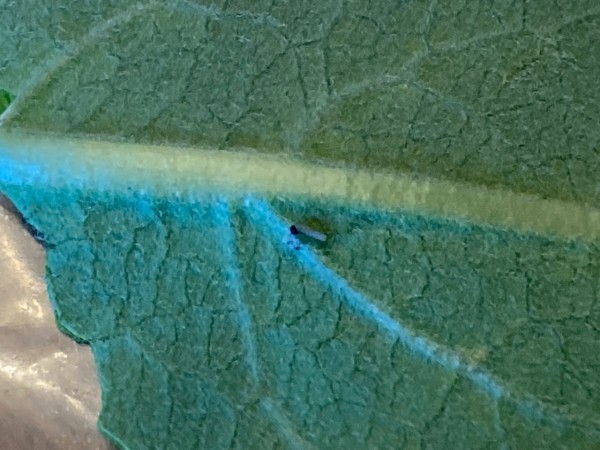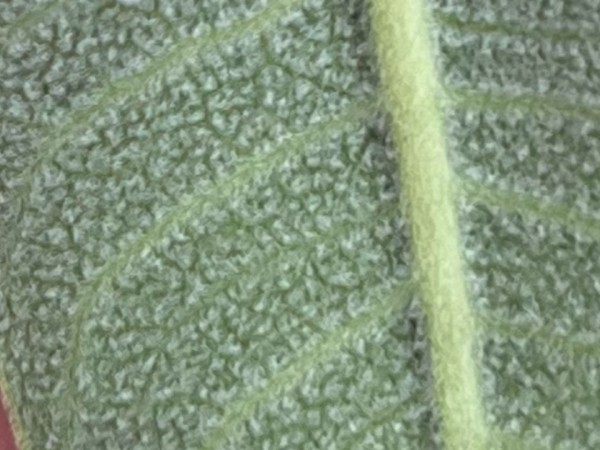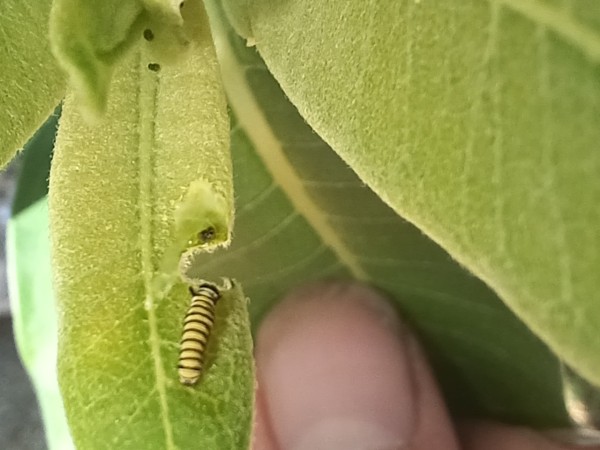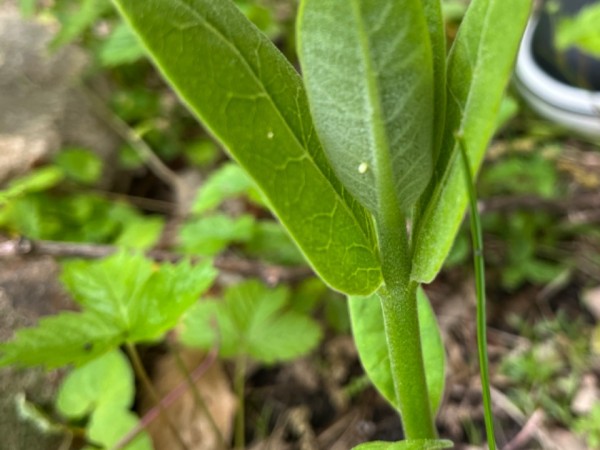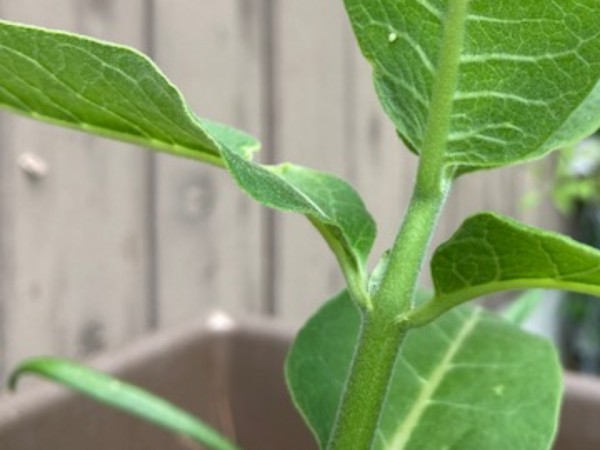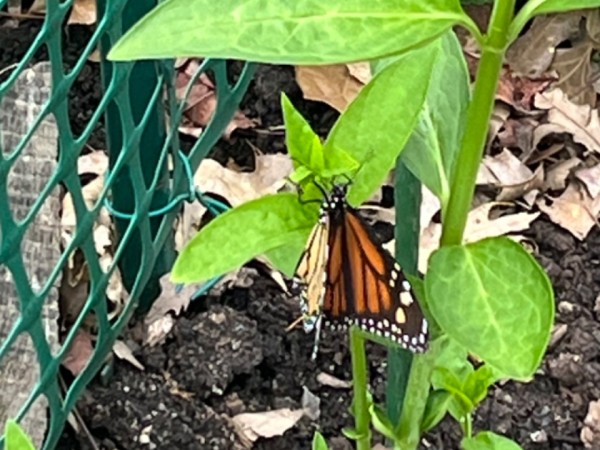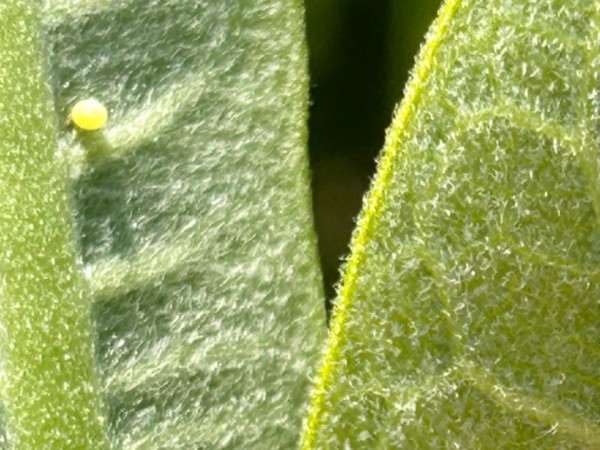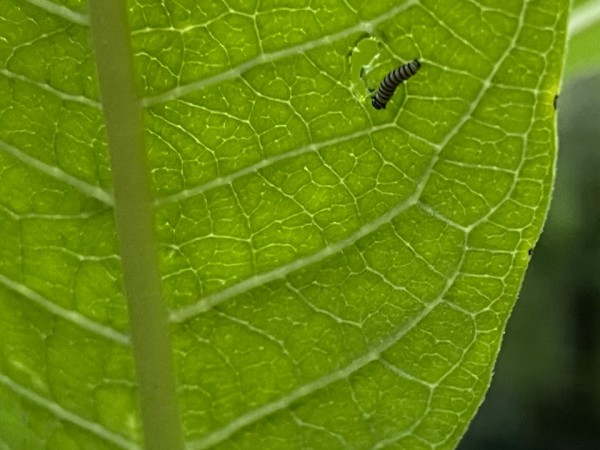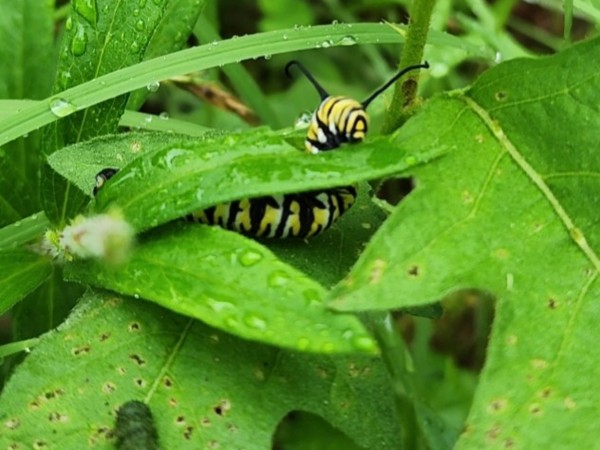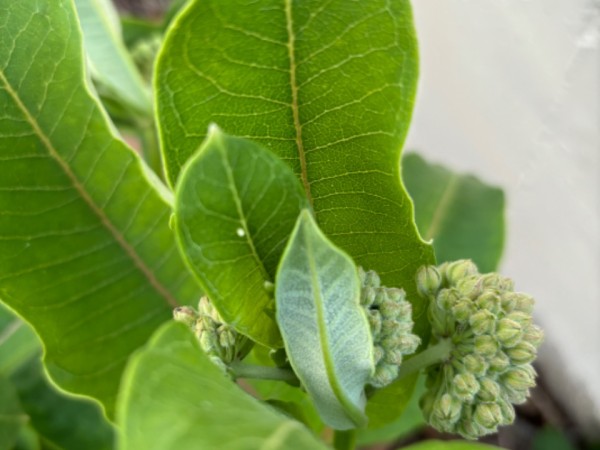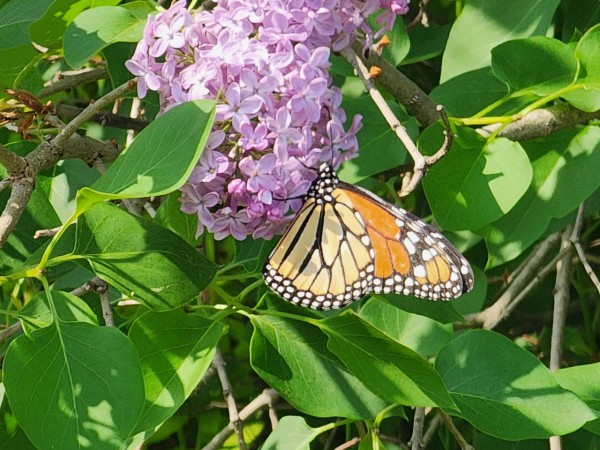Spring migration update #4: eastern migration news
More and more people continue to spot monarchs, and with those sightings increasing, reports of eggs and larvae are on the rise.
The northernmost larva reports came from Jane in Mankato, Minnesota on May 14, and Melissa in Apple Valley, Minnesota on May 19, with photos of caterpillars just getting started in the world.
Another photo of a slightly larger one nibbling on milkweed came in from Joseph in Clinton, Iowa, near the Illinois border, on May 19.
And in some cases, you might see signs of a monarch without ever even confirming they’re back yet. In New London, Minnesota, Laura submitted a photo of eggs on May 20, writing, “I haven’t seen an adult yet, but apparently a female has visited.”
“Never saw the Monarch mommy but at least 2 eggs were on this Common Milkweed in my yard,” wrote L in Chippewa Falls, Wisconsin on May 19 as well.
While some monarchs have stopped by while people are away, others have been lucky enough to spot the monarchs depositing eggs over the past week.
Susan in Bloomfield, New Jersey posted a photo of a monarch on May 18, writing, “So surprised to see this beautiful girl this afternoon. She was laying eggs on both swamp and common Milkweed!”
Laura in Lakeshore, Ontario reported eggs on May 15, the “earliest ever first sighting in my yard,” adding, “She laid eggs on various Common Milkweed plants in this patch. I didn’t do a complete inventory since I was heading out. Beautiful sunshiny day. Around 22C. Wind NNE at around 21 km/h. Pressure steady at 100.9 kilopascals. Humidity 56%.”
Hopefully, from those eggs, caterpillars will emerge, moving them on to the next stage of the life cycle.
Getting bigger
Larger caterpillars have been reported further south where caterpillars are farther along in their life cycle, although it can certainly vary even within close geographical range.
In Chapel Hill, North Carolina, Demia submitted a photo of a tiny caterpillar on May 20, writing, “I’ve seen lots of little nibbles on my milkweed but these are the first larvae I’ve found. This is late for me in Chapel Hill.”
Less than 50 miles away, in Clayton, North Carolina, Carol submitted a photo of a much larger caterpillar on butterfly weed.
Being farther south doesn’t always guarantee you’ll see larvae or even eggs before people in colder climates. Sometimes, you have to be patient. Patricia in Olathe, Kansas reported one egg on May 16, writing, “I finally found an egg in my Monarch Waystation on common milkweed.”
Other sightings in larger numbers came from Winchester, Virginia, where Wendy reported 11 larvae on milkweed on May 21, and Barco, North Carolina, where Georgia reported 14 larvae on May 20. Lou Ann spotted 20 eggs near Seneca Lake, Ohio on May 18.
Monarchs still on the move
It may be too early for caterpillars and eggs farther north, where some are still reporting first adult sightings, like Caitlynn in North Bay, Ontario, who submitted a photo of one on a lilac tree on May 22 with the comment, “Saw this monarch nectaring on my lilac tree this morning! Only one to speak of so far but I think more are coming! One of the earliest I’ve ever spotted!”
Two of the northernmost sightings so far this year have come from Ben in Silver Islet, Ontario, just north of the Minnesota border on the north side of Lake Superior, reporting one on May 21. On the other side of the border, Kent in Grand Marais, Minnesota reported two on May 19, writing, “The earliest yet for our area.”
Moving to the Northeast, Catherine in Tupper Lake, New York, in the northern part of the state, reported monarch number one on May 19, while Maine’s inaugural report of the season came from Stephanie in Saco on May 17.
Continued reporting
Just because eggs and larvae have been reported north of you doesn’t mean that all butterflies have passed you by. There’s still time! And in northern ranges, there will certainly be a wave of sightings yet to come in places like the Upper Midwest, Northeast and Canada.
If you have reported your first monarch sighting, think about additional contributions to Journey North like these volunteers have. Journey North collects sightings of milkweed, larvae, eggs and adult monarchs, and they don’t just have to be the first sightings of the year. You can submit sightings any time you spot a monarch, milkweed, or any of the other species Journey North tracks. Just make sure not to select the "first sighted" category when turning in your report.
And if possible, please include a photo to accompany your report, as well as any observations like those included here. Weather conditions and monarch behaviors are a couple of places to start when crafting your notes, but feel free to be as personal as you would like.
Click here to report your sightings and contribute to Journey North!

